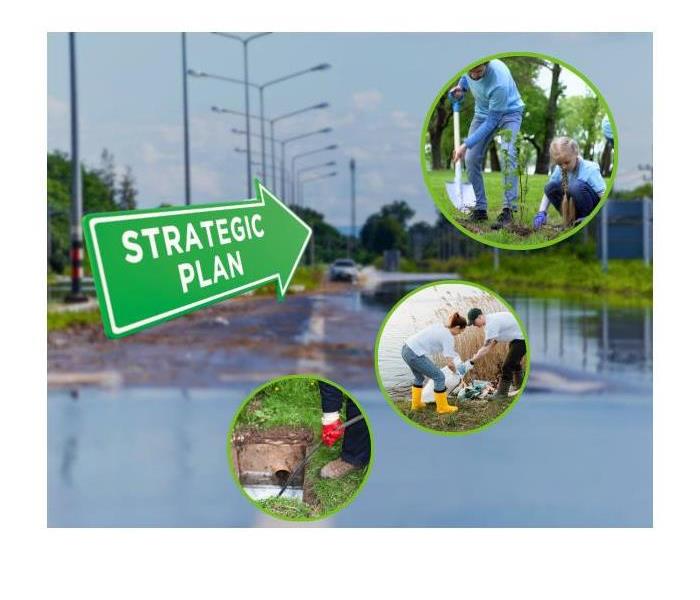Navigating Nature: 5 Essential Tips to Reduce Flooding Risks in Salt Lake City, UT
5/18/2024 (Permalink)
Salt Lake City, nestled against the backdrop of the stunning Wasatch Mountains, is a vibrant metropolis renowned for its outdoor recreational opportunities, cultural attractions, and thriving economy. However, like many urban centers, it faces the perennial challenge of managing flooding risks, particularly during the spring thaw or heavy rainstorms. With a proactive approach and strategic measures, residents and authorities can mitigate these risks and safeguard their communities. Here are five essential tips to reduce flooding risks in Salt Lake City:
1. Enhance Stormwater Management Infrastructure:
Effective stormwater management infrastructure is the backbone of flood risk reduction efforts. Salt Lake City can invest in upgrading its stormwater drainage systems, including culverts, retention ponds, and storm sewers. By enhancing the capacity and efficiency of these systems, the city can better handle excess rainwater and snowmelt, reducing the likelihood of flooding in low-lying areas and residential neighborhoods.
Additionally, implementing green infrastructure solutions such as rain gardens, permeable pavements, and vegetated swales can help absorb and filter stormwater runoff, reducing the strain on traditional drainage systems. These nature-based approaches not only mitigate flooding risks but also enhance urban biodiversity, improve air and water quality, and create attractive green spaces for residents to enjoy.
2. Promote Sustainable Land Use Planning:
Land use planning plays a critical role in flood risk management. Salt Lake City can adopt sustainable land use practices that prioritize floodplain management, limit development in high-risk areas, and promote the preservation of natural flood buffers such as wetlands and riparian zones. Zoning regulations should be updated to ensure that new construction projects adhere to flood-resistant building standards and elevation requirements.
Furthermore, incentivizing the retrofitting of existing buildings with flood-proofing measures, such as elevated foundations, waterproof barriers, and sump pump systems, can help mitigate flood damage and protect property and infrastructure during extreme weather events. Collaborating with developers, community stakeholders, and environmental organizations is essential to fostering a resilient built environment that can withstand flooding impacts.
3. Foster Public Awareness and Education:
Empowering residents with knowledge and resources is key to building a flood-resilient community. Salt Lake City can launch public awareness campaigns to educate citizens about flood risks, emergency preparedness strategies, and sustainable water management practices. This can include distributing informational materials, hosting community workshops, and leveraging digital platforms to disseminate relevant information.
Schools, universities, and community centers can also play a vital role in educating the public about the importance of flood safety and environmental stewardship. By fostering a culture of preparedness and resilience, Salt Lake City can empower individuals and families to take proactive measures to protect themselves, their properties, and their neighborhoods from flooding hazards.
4. Implement Nature-Based Flood Control Measures:
Nature-based flood control measures harness the power of ecosystems to reduce flood risks and enhance resilience. Salt Lake City can invest in natural infrastructure projects such as floodplain restoration, streambank stabilization, and watershed management initiatives. Restoring natural floodplain habitats not only provides valuable habitat for wildlife but also helps slow down and absorb floodwaters, reducing downstream flooding impacts.
Additionally, preserving and enhancing riparian vegetation along waterways can help stabilize soil, prevent erosion, and improve water quality. Strategic reforestation efforts in upstream areas can also help regulate streamflow and reduce the risk of flash floods during heavy rainfall events. By integrating nature-based solutions into flood risk management strategies, Salt Lake City can achieve multiple co-benefits for both people and the environment.
5. Foster Regional Collaboration and Resilience:
Flood risk knows no boundaries, and effective mitigation requires collaboration at the regional level. Salt Lake City can work closely with neighboring municipalities, county governments, state agencies, and federal partners to develop coordinated flood risk management plans and emergency response protocols. Sharing data, resources, and expertise can enhance the effectiveness of flood forecasting, early warning systems, and evacuation procedures.
Furthermore, engaging with indigenous communities, tribal nations, and other marginalized groups is essential to ensure that flood resilience efforts are inclusive and equitable. By fostering a spirit of collaboration and solidarity, Salt Lake City can build a stronger, more resilient region that is better equipped to withstand and recover from flooding events.
Reducing flooding risks in Salt Lake City requires a multifaceted approach that integrates engineering solutions, sustainable land use planning, public education, nature-based interventions, and regional collaboration. By implementing these five essential tips, Salt Lake City can enhance its resilience to flooding hazards, protect lives and property, and preserve the natural beauty and vitality of its communities for generations to come.





 24/7 Emergency Service
24/7 Emergency Service
